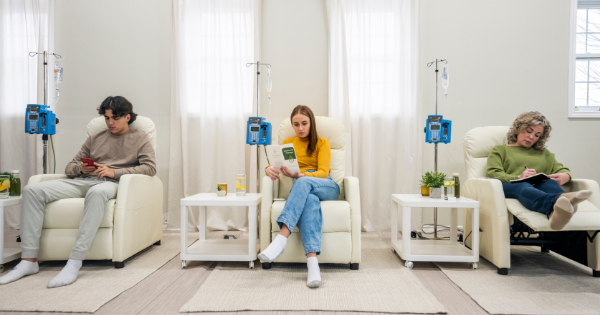Of everyone in healthcare experiencing financial pressure in 2025, hospitals, clinics and even smaller providers in rural areas are feeling it most. Shrinking Medicaid reimbursements, rising uncompensated care and workforce shortages have pushed countless facilities to the brink.
The One Big Beautiful Bill Act (OBBBA) includes nearly $1 trillion in cuts to Medicaid, which could further stress rural healthcare, especially. To address this reality, the bill includes the Rural Health Transformation Program (RHTP). This $50 billion investment, distributed over five fiscal years beginning in 2026, represents the largest federal commitment to rural health in decades. The question remains which communities and providers receive funding, and what providers need to do to benefit.
The window to apply is short, and the process is complex. Here’s what you need to know about how the program works, whether you qualify and how to position yourself to benefit.
What Funding Is Available Through the Rural Health Transformation Program (RHTP)?
Total funding for the RHTP over five years is $50 billion. Half is considered ”Baseline Funding,” split evenly among all states. The other half is “Workload Funding,” allocated to states based on rural health factors such as:
- Size and proportion of rural population
- Percent of hospitals receiving Medicaid Disproportionate Share Hospital (DSH) payments
- Levels of uncompensated care
- Presence of EMS and rural provider partnerships
- Use of remote care services and consumer-facing technology
- State health and lifestyle indicators
The goal is to ensure both small and large rural states receive funding, while also supporting rural areas facing bigger challenges.
How Rural Providers Can Use Rural Health Transformation Program (RHTP) Funds
There are specific requirements for how RHTP funding can be used. The application requires detailed information on a project narrative, budget narrative, endorsements, federal forms and assessments to demonstrate the need and avoid duplication.
States must use funds to support at least three of CMS’s priority activities, including:
- Maintaining essential services, like emergency care, behavioral health and obstetrics
- Strengthening the financial stability of rural hospitals
- Investing in workforce development and technical assistance
- Expanding consumer technology solutions and remote care
- Supporting prevention, chronic disease, and behavioral health programs
- Infrastructure and capital improvements (capped at 20% of funding)
The program also stipulates limitations on how the money can be spent, such as no new construction or cosmetic upgrades and limited administrative costs. CMS will review applications and announce approvals by December 31, 2025, so that funds can be distributed in 2026.
How to Position Your Practice to Receive RHTP Funding
CMS has made it clear the money must support sustainable access to high-quality care. States are required to address at least three priority areas, such as:
- Keeping essential services like emergency and behavioral health open
- Investing in rural workforce development
- Building out consumer technology or telehealth solutions
- Investments in prevention, chronic disease management and behavioral health are strongly encouraged.
NPs and PAs working in rural areas can play a crucial role in addressing these priority service areas. If your practice fills an essential care gap, like behavioral health, women’s health or chronic disease management, consider advocating to your state’s hospital association or health department to have those services explicitly included in the application.
States want to demonstrate to CMS that they have on-the-ground providers ready to deliver care, so specific information from independent NPs and PAs strengthens that case.
Next Steps for Providers to Be Included in Your State’s RHTP Application
Begin conversations now with your state hospital association and policy contacts to ensure your priorities are included in the state’s application. States will need to submit an application by November 5, so now’s the time to explain how your care fits into rural health transformation goals.
If you can, build partnerships with organizations that can strengthen your case, such as community health centers and rural hospitals that refer to local providers for follow-up care after discharge.
For those who act quickly enough, the Rural Health Transformation Program is the largest rural health funding opportunity in decades. States that submit comprehensive, forward-looking applications will be best positioned to sustain essential services, invest in innovative care and protect vulnerable patients.
NPs and PAs who are thinking about ways to position themselves as providers who can help meet state goals for RHTP are most likely to benefit from the funding. Now’s the time to advocate, connect with your associations and ensure your voice is part of the application process.
Practical Steps for NPs and PAs to Access Rural Health Transformation Program Funding
- Connect with your state hospital association now to see where independent practices might fit into the proposal.
- Consider partnering with other rural providers to demonstrate regional collaboration. Critical Access Hospitals and Federally Qualified Health Centers will receive most of the funds, but many of these organizations partner with other community providers. For example, you may provide follow-up care for patients discharged from rural hospitals or manage chronic conditions locally.
- Start gathering your data now on the patient access, chronic disease outcomes or cost savings your practice delivers. States need measurable outcomes for their application and might be willing to include your specific data.
- Watch for state-level announcements in early 2026. Once CMS awards the funds, states will define how small practices can formally participate.
Frequently Asked Questions
- What is the Rural Health Transformation Program (RHTP)?
The Rural Health Transformation Program (RHTP) is a new $50 billion federal initiative created to strengthen rural healthcare between 2026 and 2030. Administered by CMS, the program helps states maintain essential services like emergency and behavioral health care, expand telehealth access, and invest in rural healthcare workforce development. - Who is eligible to receive RHTP funding?
RHTP funding is distributed to states, which then allocate funds to eligible rural hospitals, clinics, and healthcare providers. Nurse practitioners (NPs) and physician associates (PAs) who provide essential services—such as behavioral health, women’s health, or chronic disease management—can play a key role in state applications and benefit indirectly through partnerships and inclusion in approved projects. - How can providers apply or get involved in the RHTP?
Providers cannot apply directly to CMS for RHTP funds but can collaborate with their state’s hospital association or health department to be included in the state’s application. NPs and PAs should act now by gathering outcome data, forming partnerships with local hospitals or community health centers, and advocating for their services to be included before the state submission deadline on November 5, 2025.
If you have questions about how your services might fit into your state’s RHTP funds, CM&F Group works with specific partners who specialize in helping providers structure strong applications. Reach out to let us connect you.



